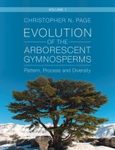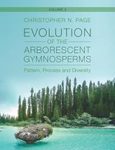About this book
Cardiovascular diseases (CVDs) are the leading cause of death worldwide today but are not just a modern phenomenon. To explore the deep roots of CVDs in human history, this book, for the first time, brings together bioarchaeological evidence from different periods, as old as 5000 BC, and geographic locations from Alaska to Northern Africa. Experts in their fields showcase the powerful toolset available to bioarchaeology, which allows a more comprehensive reconstruction of the human past through evidence for disease. The tools include aDNA and histological analyses and digital imaging techniques for studying skeletal and mummified human remains. The insights gained from these studies are not only of value to historical research but also demonstrate how the science of archaeological human remains can provide the long view of the history of disease and contributes to modern biomedical research within the context of evolutionary medicine.
Contents
1. The bioarchaeology of cardiovascular diseases – Introduction / Michaela Binder
2. Exploring the sources of indirect evidence for cardiovascular disease in bioarchaeology: potential impact on understanding its evolution / Charlotte A. Roberts
Part I. Evidence from Mummified Tissues:
3. Atherosclerosis, mummies and histological analysis. A review / Gino Fornaciari and Raffaele Gaeta
4. Computed tomography evidence of atherosclerosis in ancient mummies: the Horus studies of mummies from five continents / Randall C. Thompson, Ashna Mahadev, M. Linda Sutherland and Gregory S. Thomas
5. The genetic background of atherosclerosis in ancient mummies / Albert Zink, Christina Wurst, Frank Maixner, Samuel Wann, Randall C. Thompson and Gregory S. Thomas
6. Cardiovascular disease in Nile valley mummies: exploring the need for a more systematic approach that accounts for vessel prevalence, links to oral health and the impact of dual energy CT scanning / Daniel Antoine, Marie Vandenbeusch, Rebecca Whiting and Benjamin Moreno
7. Atherosclerosis among the elites: a bioarchaeological investigation of 17th–19th century mummified human remains from Palermo, Sicily (Italy) and Vilnius (Lithuania) / Dario Piombino-Mascali, Rimantas Jankauskas, Albert Zink and Stephanie Panzer
Part II. Cardiovascular Diseases Associated with Human Skeletal Remains:
8. Calcified structures as potential evidence of atherosclerosis associated with human skeletal remains from Amara West, Nubia (1300–800BC) / Michaela Binder and Charlotte A. Roberts
9. Intracranial atherosclerosis in Medieval Scandinavia / Caroline Arcini and Elisabeth Englund
10. Abnormalities of the vertebral artery: are cervical pressure defects being overlooked in palaeopathology? / Daniel Antoine and Tony Waldron
11. A heart of stone – constrictive pericarditis and other calcified tissues from the pathologic-anatomical collection at the Narrenturm in Vienna, Austria. A review / Karin Wiltschke-Schrotta, Eduard Winter and Michelle Gamble
12. 'Absence of evidence is not evidence of absence': why is there a lack of evidence for cardiovascular disease in the bioarchaeological record? / Michaela Binder and Charlotte A. Roberts
Part III. 'Contemporary Perspectives':
13. The challenging diagnosis of cardiovascular disease in skeletal remains: identifying atherosclerotic calcifications from modern documented individuals / Lucie Biehler-Gomez, Emanuela Maderna and Cristina Cattaneo
14. Atherosclerosis in indigenous Tsimane – A contemporary perspective / Randall C. Thompson, Gregory S. Thomas, Angela D. Neunuebel, Ashna Mahadev, Benjamin C. Trumble, Edmond Seabright, Daniel K. Cummings, Jonathan Stieglitz, Michael Gurven and Hillard Kaplan
Customer Reviews
Biography
Michaela Binder is a bioarchaeologist who has conducted research and fieldwork projects in many different countries, including Austria, Sudan, Egypt, Italy and Saudi Arabia. Combining cultural and biological perspectives, her work focuses on the comprehensive reconstruction of living conditions of past human populations. She is a Senior Project Manager at Novetus GmbH Archaeological Services, Austria and lectures at the University of Vienna, Austria.
Charlotte A. Roberts is an Emeritus Professor of Archaeology at Durham University, UK. A bioarchaeologist and former nurse, she has conducted palaeopathological research for over forty years. She has authored over 200 papers/book chapters, and authored/edited a number of books, including The Backbone of Europe (Cambridge University Press, 2018) and Palaeopathology and Evolutionary Medicine: An Integrated Approach (Oxford University Press, 2022). She was elected a Fellow of the British Academy in 2014.
Daniel Antoine is the Keeper (Head) of the Department of Egypt and Sudan at the British Museum and an Honorary Senior Research Fellow at University College London, UK. He has published widely on bioarchaeology and palaeopathology, including Regarding the Dead: Human Remains in the British Museum and Ancient Lives, New Discoveries: Eight Mummies, Eight Stories (both British Museum Press, 2014).
Contributors:
- Michaela Binder
- Charlotte A. Roberts
- Gino Fornaciari
- Raffaele Gaeta
- Randall C. Thompson
- Ashna Mahadev
- M. Linda Sutherland
- Gregory S. Thomas
- Albert Zink
- Christina Wurst
- Frank Maixner
- Samuel Wann
- Daniel Antoine
- Marie Vandenbeusch
- Rebecca Whiting
- Benjamin Moreno
- Dario Piombino-Mascali
- Rimantas Jankauskas
- Stephanie Panzer
- Caroline Arcini
- Elisabeth Englund
- Tony Waldron
- Karin Wiltschke-Schrotta
- Eduard Winter
- Michelle Gamble
- Lucie Biehler-Gomez
- Emanuela Maderna
- Cristina Cattaneo
- Angela D. Neunuebel
- Benjamin C. Trumble
- Edmond Seabright
- Daniel K. Cummings
- Jonathan Stieglitz
- Michael Gurven
- Hillard Kaplan















































